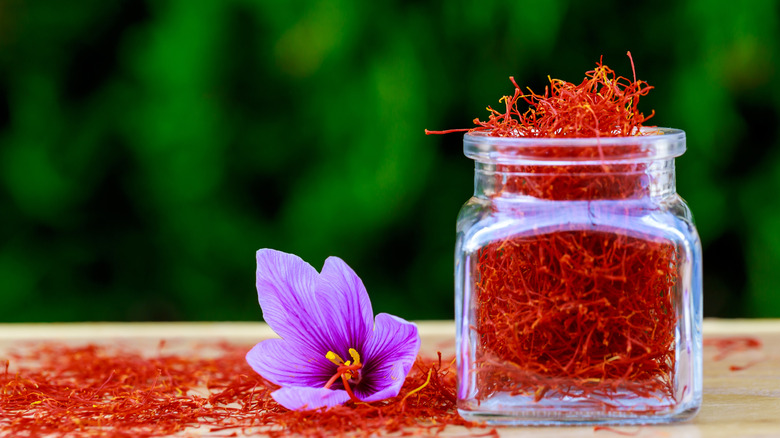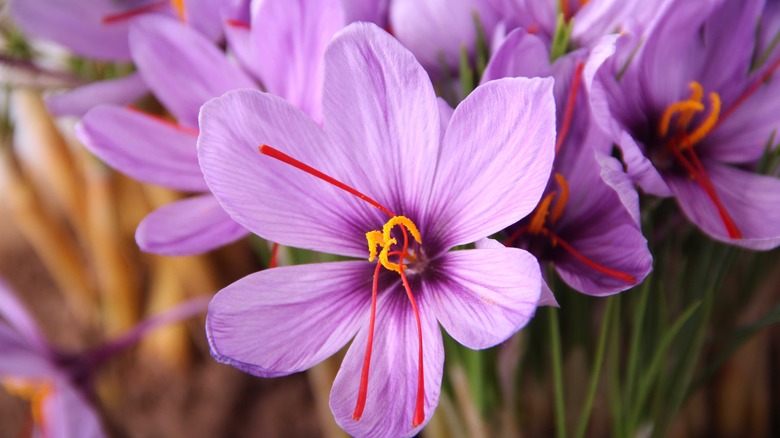Saffron Prices Will Get Even Higher In A Harsh Global Shortage
If you've ever dined on risotto alla Milanese, paella, or bouillabaisse, you've likely had the opportunity to enjoy the delicate flavor of saffron. And if you've ever made those dishes (or the many others that call for the spice), you're also familiar with how expensive it is. Saffron has been one of the most expensive natural ingredients in the world for centuries. Now, with lower and lower amounts of saffron being harvested, the cost is expected to rise even higher.
Saffron, nicknamed "red gold" because of its reputation for being the most costly spice in the world, carries a hefty price tag due to the amount of labor involved in harvesting it. The thin red threads of the spice are carefullly retrieved from crocus sativus flowers by hand. Producing just one pound of saffron requires approximately 75,000 flowers. Now, climate change is causing prices to soar, as yields are dropping in countries known for saffron production.
Iran produces most of the world's saffron — over 90%. However, as of late, harvest output has been reduced by more than 50%, due to harsh temperatures in the winter, high temperatures in the summer, and a lack of precipitation. While the crocus flower is known for its ability to thrive in dry and warm climates, temperatures of up to 122 degrees Fahrenheit — which have plagued Iranian farms — are excessive. Thousands of surface wells of water have dried up, which was too much for some saffron crops to handle.
Other saffron-producing countries are also suffering
Before Iran took over as the largest producer of saffron, Spain was in the top spot. The country still produces the spice, but in far lower quantities than it did previously, with the total amount tumbling downward in the last several years. In 2018, Spain produced 915 kilograms (just over 2017 pounds) of the spice, while in 2021, it only produced 345 kilograms (just over 760 pounds). Reduced rainfall and increasing temperatures are also being blamed for the smaller harvests.
Wired also reports that Spain's saffron production is the opposite of up-to-date — growth of the spice has long been on the small side, with little to no technological updates nor any large swaths of land dedicated to saffron. This may also be a reason behind decreased output. India, too, is known for its saffron production, particularly in Kashmir. However, the country's output of saffron has decreased as well for multiple reasons, not the least of which is also related to climate change.
As the result of all these factors, the Financial Times reports that the current price of premium saffron can range from $1,400 per kilo in Iran — double what it was last year — to $1,800 overseas. Since 2020, the price of saffron has increased by over 60%. With 2023's harvesting season having concluded in the fall, there are currently no up-to-date predictions for a price increase. Still, with ever-increasing demand for the spice and reduced yields, it's likely that the upward trend in saffron costs could continue.


